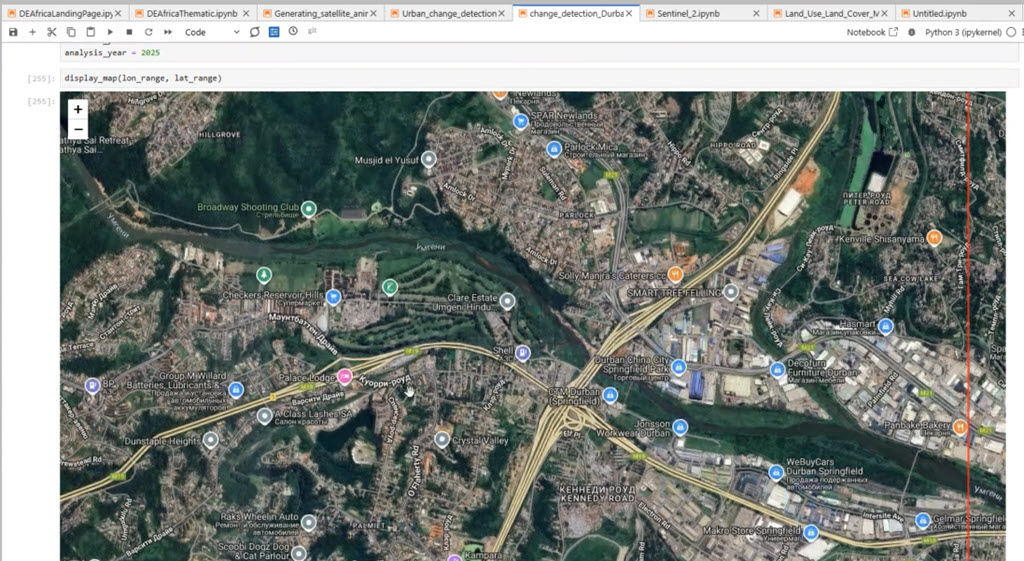Our Team Hackathon Approach
Our Team Formation
The G20 Hackathon organizers asked their member states to raise awareness of the hackathon goals and objectives, with the intent to have teams of 3-5 people participate.
Team MapleByte is a team of Canadians from industry and government, with a range of skills and expertise in flood detection, artificial intelligence, geospatial software development, Earth observation, and public safety and policy.
Our Approach
Picking An Area-of-Interest (AOI)
- We needed to pick an Area of Interest that a) had visible settlement growth over time and b) had detectible flooding and for which we could c) validate against documented “ground truth”.
- We did some secondary research online and found a comprehensive article “A Perfect Storm” in The Outlier, written by Leonie Joubert with additional research and writing by Laura Grant, Gemma Ritchie and Gemma Gatticchi and support from Internews’ Earth Journalism Network.
As the planet heats up, climate disasters will hit coastal cities with greater force. > Durban’s recovery from the April 2022 floods highlights the uncertainties such cities face and gives insight into how they can prepare for a sustainable and resilient future. A Perfect Storm]

Dividing Up the Work
- The hackathon challenge objectives presented three clear objectives (Settlement Detection, Growth Prediction, Flood Risk). Each represented a distinct “work stream”.
- We decided to include an additional outcome to the end-to-end-pipeline to identify and communicate relevant policies, risks, and adaptation and resilience measures to relevant stakeholders including policy makers, public safety officials, and of course members of the informal settlements.
- We were confident we make a lot of progress in a few days, but we knew we would be more efficient if we assigned each “workstream” to one principal investigator with assistance from the other team members
- We decided to work mostly asynchronously at our own schedule (and in our own timezones) via a shared team Slack Channel
- We had daily check-in meetings via Microsoft Teams on three different days during the hackathon period.
- Work products were mostly shared via our team GitHub repository. A Dropbox folder link was used for artefacts that were very temporary or used for display/note taking purposes rather than as code/data.
Live Micro-Blogging Our Discovery Process
- We were confident we make a lot of progress in a few days but that we would try things that would not always work out, or would raise more questions.
- We wanted to retain these discoveries and learnings
- So, we added a fifth workstream, this team blog.
- As team members worked in Slack, we regularly took a minute to mention what we were doing and what we were discovering, struggling with, or what did not work.
- A team member then transcribed these notes into markdown pages hosted on this site and pushed as code. They therefore serve as a form of “live micro-blogging” of our work activities.
- This process also made it easier for us to eventually collect our findings together for the team presentation to the hackathon organizers.